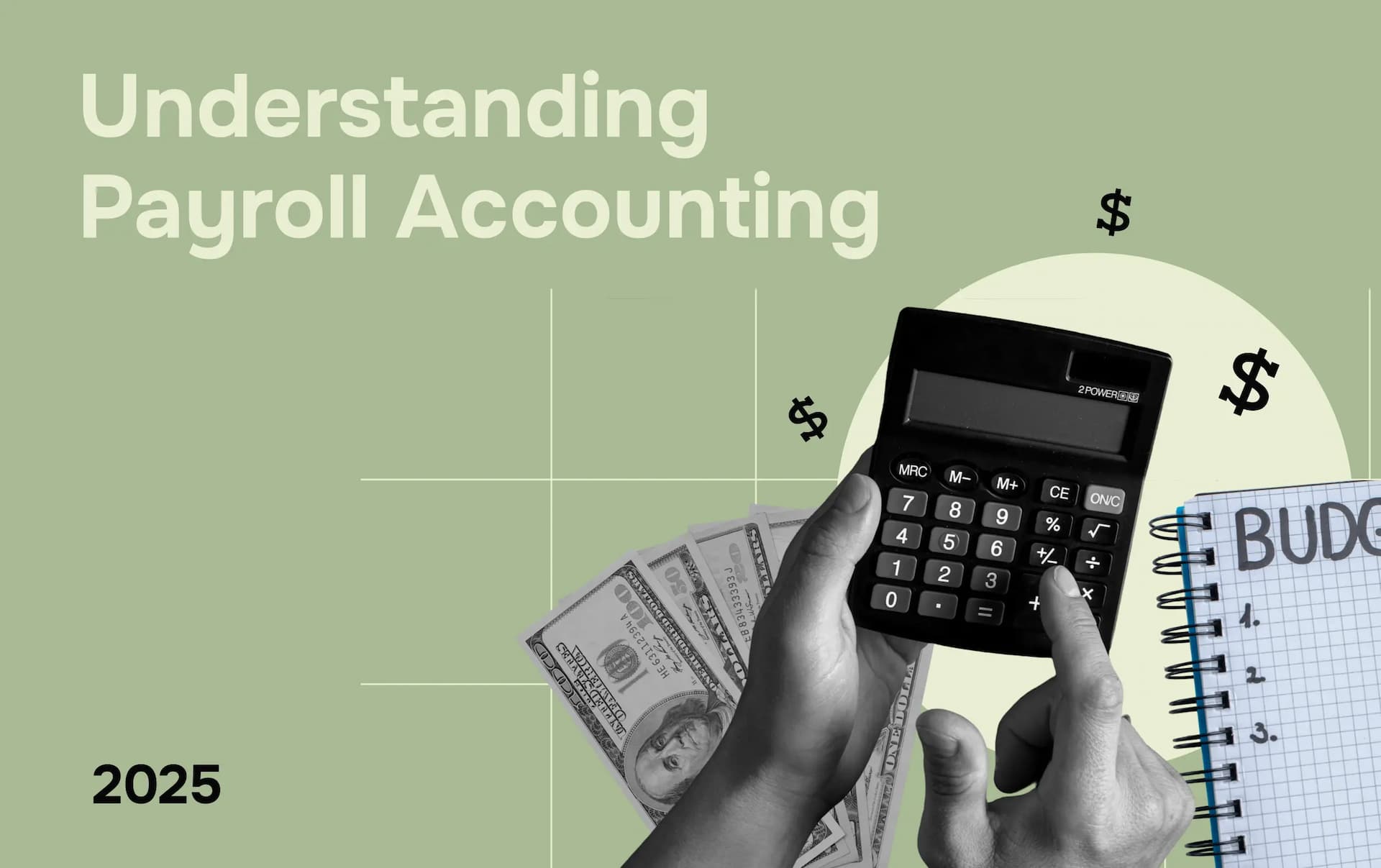
In any business, managing employee compensation isn't just about cutting checks. It involves careful financial tracking, compliance with tax laws, and clear documentation of all which fall under payroll accounting.
Think of payroll accounting as the backbone of your organization’s financial operations related to employees. If you’re a business owner, HR manager, or financial officer, understanding payroll accounting is crucial to ensure legal compliance and healthy cash flow. This blog covers everything from the basics of payroll accounting to payroll taxes.
What Is Payroll Accounting?
Payroll accounting is the behind-the-scenes powerhouse that ensures every aspect of employee compensation is accurately recorded and managed. It covers everything from wages, bonuses, and overtime pay to payroll taxes, benefits like insurance, and deductions. By keeping all compensation-related details organized, it helps businesses stay compliant and ensures employees are paid correctly and on time.
Think of it as your business’s dedicated scorekeeper, focused solely on employee-related compensation and tax obligations, not broader business expenses like rent or equipment.
At its core, payroll accounting uses payroll journal entries to record each payroll transaction in a company’s general ledger. These entries are essential for financial reporting, tax filing, and internal analysis.
Types of Payroll Accounting Entries
Alright, so once we’ve got the "what," let’s hit the "how." Payroll accounting entries usually fall into three categories:
1. Initial Recordings
This is the OG entry you make every pay period. You’re logging the gross wages (that’s the big number before taxes), withholdings (all that stuff the government and insurance companies take), and net pay (the actual dough that lands in the employee’s pocket).
2. Accrued Wages
Most companies pay after the work is done. So, if an employee starts on March 1, they’ll typically be paid at the end of the month. Even if the money hasn't reached their bank yet, you still need to record what you owe them by March 31.
That owed amount is called accrued wages, it's the salary an employee has earned but hasn't been paid yet. Recording it on time keeps your books clear and accurate.
3. Manual Payments
These are the "oopsie" payments. Like when someone forgets to process a raise or needs a final check after quitting. These happen outside your normal payroll cycle and get processed manually. Just don’t forget to add them back into the books.
Expenses That Fall Under Payroll Accounting
Payroll accounting focuses solely on employee-related expenses. These include:
• Employee compensation: Salaries, hourly pay, bonuses, paid time off, and any other taxable income reported on Form W-2.
• Taxes & insurance: Social security, Medicare, income tax withholdings, and workers' compensation.
• Benefits: 401(k) matching, and any supplemental insurance like dental and vision coverage.
• Other perks: Tuition reimbursement, wellness stipends, and even wage garnishments.
• Employer-paid taxes: Your portion of Medicare and Social Security payments for employees.
Payroll Taxes: Let’s Get Into the Nitty-Gritty
Payroll tax refers to the taxes levied on wages paid to employees. These are divided into two categories:
1. Taxes Paid by Employers (Out of your pocket)
• FICA (Federal Insurance Contributions Act): You pay 6.2% for Social Security and 1.45% for Medicare. And your employees match that.
• FUTA (Federal Unemployment Tax Act): The total rate is 6.0% on the first $7,000 of wages per employee. However, most employers receive 5.4% credit, reducing the effective rate to 0.6%.
2. Taxes Withheld From Employees
You are responsible for withholding the following from employee paychecks:
• Federal income tax
• State and local income tax (where applicable)
• Employee share of Social Security and Medicare (same percentages as the employer)
You must remit both employee withholdings and employer-paid taxes to the IRS and other tax agencies regularly, often quarterly.
How to Make Payroll Tax Payments
Making the payment is easier than figuring out how much to pay.
Use the EFTPS. That’s the Electronic Federal Tax Payment System. It’s secure, it’s online, and it’s the only way the IRS wants you to pay.
Example of Payroll Accounting
Let’s look at an example of a typical payroll journal entry. These entries are first recorded in the payroll journal, which serves as a subsidiary ledger that captures detailed payroll transactions for each cycle. Later, the summarized totals from this journal are posted to the general ledger using the appropriate payroll accounts listed in the chart of accounts.
Sun Umbrellas Inc., a fictional retailer of umbrellas, employs 10 individuals. Three are salaried employees earning $34,000, $29,000, and $32,000 annually. The other seven employees are hourly workers earning $10 per hour and working 40 hours per week. All employees are located in a state. One employee has a court-ordered wage garnishment of $800 per month. For the week ended May 16, the payroll accountant prepared the following payroll calculations:
.png)
*Weekly Salary (Gross Wage):
Annual Salary: $34,000
Weekly Pay = $34,000 ÷ 52 = $653.85
*Federal Withholding:
• This depends on IRS tax tables and employee's W-4.
• In this case, we assume a weekly federal withholding of approximately $120 for salaried employees and $50 for hourly workers, based on standard single filing status with no dependents.
(For example, this is an estimated amount; real values would use IRS tax tables.)
*Social Security (SS) Tax:
• Rate: 6.2% (for both employee and employer)
• SS = 6.2% of $653.85 = $40.54
*Medicare Tax:
• Rate: 1.45% (for both employee and employer)
• Medicare = 1.45% of $653.85 = $9.47
*FUTA (Federal Unemployment Tax):
• Rate: 0.6% on the first $7,000 of annual wages
• Weekly FUTA = 0.6% × $653.85 = $3.92
Using the information calculated above, the payroll accountant makes the following journal entry to record the weekly payroll:

Bottom Line
Payroll accounting may seem complex, but with the right systems, it can become a seamless part of your business operations. By understanding the types of payroll entries, tax obligations, and calculation methods, you’ll ensure accurate financial reporting and compliance with the law.
Whether you're running payroll manually or using automated software, leveraging a payroll accounting services can provide the strong foundation you need for long-term business success.

Shekhar Mehrotra
Founder and Chief Executive Officer
Shekhar Mehrotra, a Chartered Accountant with over 12 years of experience, has been a leader in finance, tax, and accounting. He has advised clients across sectors like infrastructure, IT, and pharmaceuticals, providing expertise in management, direct and indirect taxes, audits, and compliance. As a 360-degree virtual CFO, Shekhar has streamlined accounting processes and managed cash flow to ensure businesses remain tax and regulatory compliant.
You might also like:
- QuickBooks vs. Xero vs. Wave: Which One Really Fits Your Business?
- Understanding Activity-Based Costing: The Smarter Way to See Your Real Costs
- Why Cloud Accounting Is the Future of Financial Management
- Why Small & Medium Businesses (SMBs) Prefer a Certified QuickBooks ProAdvisor
- Financial Accounting vs Managerial Accounting: Two Sides of the Same Coin
Listen Exclusive Podcast On

